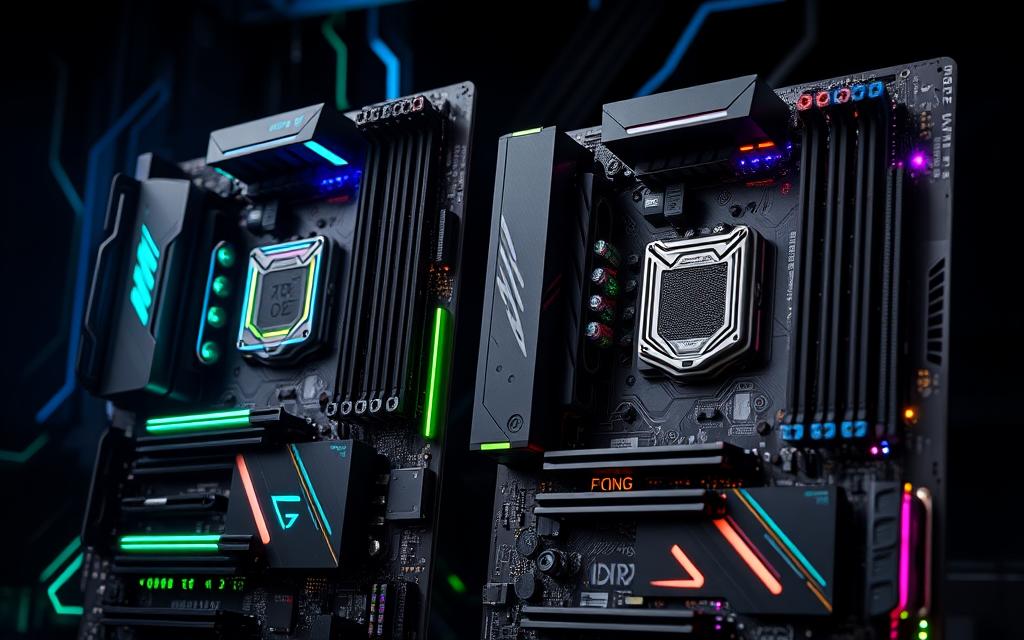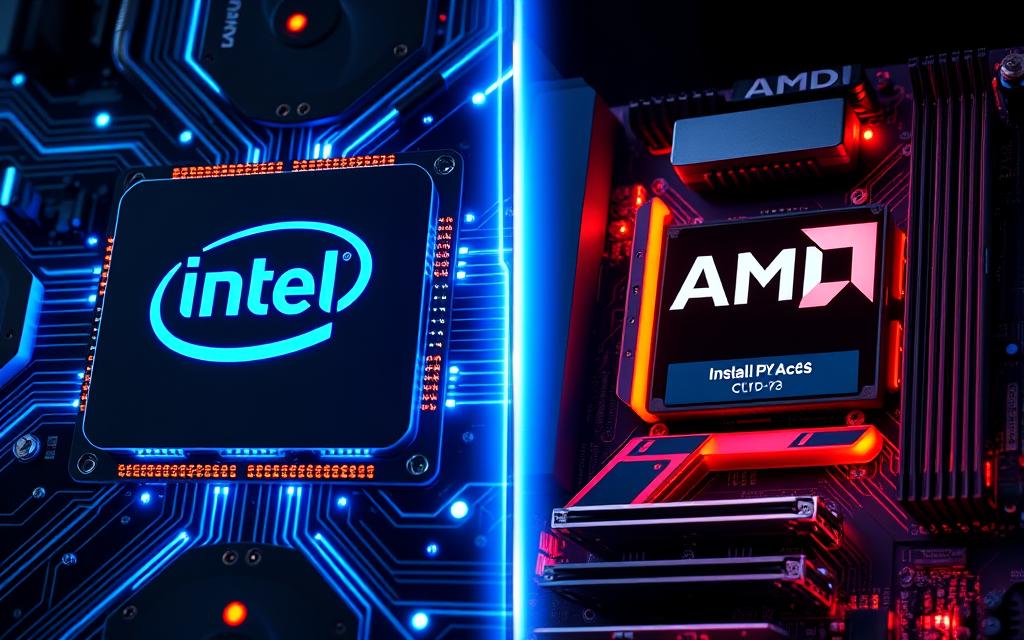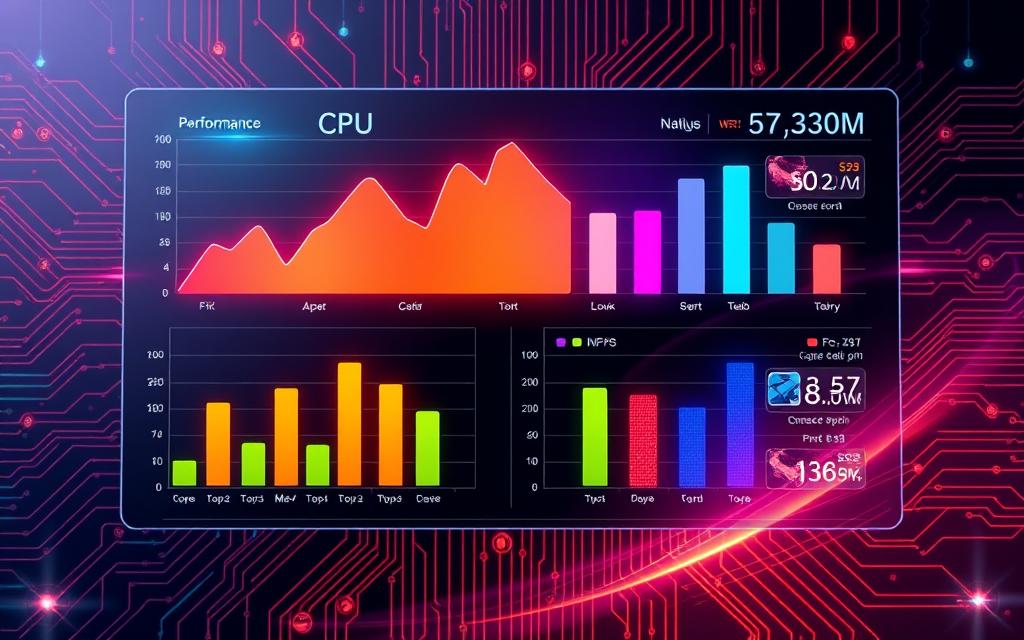When building a high-performance system, particularly one designed for gaming or demanding workloads, the choice of motherboard is crucial. Motherboards act as the backbone of your PC, significantly influencing CPU compatibility, performance, and upgrade potential. You’ll want to select from the best motherboards available to ensure you can fully unlock the capabilities of your CPU. This article is your ultimate guide, focusing specifically on high-performance motherboards compatible with both AMD and Intel CPUs, helping you make informed decisions for your next build.
Introduction to Motherboards
A motherboard serves as the central hub in any computer system, providing essential connections for various hardware components. Understanding motherboards is crucial for anyone looking to build or upgrade their computer. These complex boards can range from six to 14 layers of fiberglass, showcasing their intricate design and functionality.
Motherboard basics indicate that they support connections to CPUs, memory, chipsets, and external peripherals, including Wi-Fi and graphics cards. This functionality greatly impacts the overall performance and capabilities of your system, making it vital to select the right board based on your specific needs.
Various motherboard form factors exist, including ATX, Micro ATX, and Mini ITX, each tailored for different computer sizes and requirements. For example, Mini ITX motherboards, measuring just 17 by 17 centimeters, are perfect for small form factor builds. Gaming motherboards stand out for their enhanced features, ideal for high-performance computing compared to traditional desktop boards.
Leading manufacturers like Asus, Gigabyte Technology, and ASRock dominate the market, with Asus currently being the largest globally. Each manufacturer offers unique features designed to optimize your computing experience. The motherboard acts as a conduit for data transport, with a northbridge responsible for connections to high-speed components, while a southbridge manages connections to peripheral devices.
| Form Factor | Size (in cm) | Main Use |
|---|---|---|
| ATX | 30.5 x 24.4 | Standard desktops |
| Micro ATX | 24.4 x 24.4 | Compact desktops |
| Mini ITX | 17 x 17 | Small form factor builds |
| Flex ATX | 24.4 x 19 | Compact systems |
| Low-Profile eXtended (LPX) | Varies | Space-efficient builds |
As you explore your options, take the time to consider the various components and connectivity options crucial to your needs. Choosing the right motherboard can significantly enhance your computing experience, leading to better performance and compatibility with your selected components.
Importance of Choosing the Right Motherboard
Selecting the appropriate motherboard is pivotal for achieving optimal performance in your system. The right motherboard affects compatibility with your CPU, influencing RAM speed and I/O connectivity. This choice is especially crucial for gaming motherboards, which need to handle demanding applications and graphics processing efficiently.
Motherboard selection goes beyond just fitting into your PC case. It requires an understanding of various specifications that can significantly impact performance. Chip makers like AMD and Intel change sockets every generation, illustrated by the current AM5 and LGA1700 sockets supporting newer processor generations like Zen 4 and Alder Lake. Ensuring your motherboard aligns with these advancements ensures high-speed performance and longevity.
Various form factors, including E-ATX, ATX, and Micro-ATX, cater to different hardware requirements and setups. Enhanced features can make a difference; for instance, motherboards with multiple PCIe slots allow for impressive expansion, supporting advanced graphics cards and SSDs. They often provide USB ports accommodating peripherals critical for gamers and power users, including USB Type-C and Thunderbolt ports.
Considering future-proofing your build is essential. Choosing a motherboard that supports potential upgrades is vital for maintaining your system’s relevance and performance. Features like onboard WiFi and superior audio solutions can elevate your experience. Careful motherboard selection ultimately dictates system stability, processing speed, and overall capabilities, crucial for an optimal computing experience.
Types of High-Performance Motherboards
When you consider building a high-performance system, selecting the right motherboard form factors can significantly affect your experience. Different designs, such as ATX and E-ATX, offer distinct advantages suited for diverse needs, while Micro ATX and Mini ITX cater to those with limited space. Understanding each type allows you to make an informed decision for your particular setup.
ATX and E-ATX Form Factors
ATX motherboards are a popular choice for gaming and workstations. They generally provide many features, including multiple PCIe slots for expansions and impressive cooling solutions. The E-ATX form factor goes a step further, offering additional space for enhanced components, making it ideal for power users who require extensive connectivity and better thermal management. Choosing either of these motherboard form factors ensures compatibility with a range of high-performance CPUs while providing room for growth in future upgrades.
Micro ATX and Mini ITX for Compact Builds
For those who seek compact builds, Micro ATX and Mini ITX motherboards deliver excellent performance in a smaller package. Micro ATX boards still provide several expansion slots while fitting in narrower spaces, perfect for media centers or smaller gaming setups. Mini ITX boards, on the other hand, focus on maximizing space efficiency, making them ideal for extremely tight quarters or portable systems. Despite their size, these boards can still support powerful components and offer great versatility, ensuring that your compact build remains high-performing.
| Form Factor | Dimensions (mm) | Typical Use Cases |
|---|---|---|
| ATX | 305 x 244 | Gaming setups, workstations |
| E-ATX | 305 x 330 | High-performance builds, extensive connectivity |
| Micro ATX | 244 x 244 | Media centers, compact gaming |
| Mini ITX | 170 x 170 | Portable systems, extreme space-savings |
High-Performance Motherboards for AMD CPUs
When considering a motherboard for your AMD Ryzen 7000 series processor, it is important to choose one that not only supports the latest technology but also fits your budget and performance needs. AMD motherboards equipped with the AM5 socket provide advanced features and connectivity options, making them an excellent choice for users looking to maximize their computing experience.
Top Picks for Ryzen 7000 Series
For the Ryzen 7000 series, the following motherboards stand out as exceptional choices:
- ASRock X670E Taichi – Priced at approximately $499, this motherboard supports PCIe 5.0 and features a robust design with eight SATA ports and USB4 Type-C connectivity.
- Gigabyte B650E Aorus Master – With a price tag of around $400, it offers four PCIe 5.0 M.2 sockets and 13 USB ports, ensuring you have ample options for expansions.
- Gigabyte X670E Aorus Pro X – This mid-range motherboard focuses on high connectivity and performance, making it a solid option for gamers and creators alike.
Budget-Friendly Options for AMD Builds
If you are looking for budget AMD builds, there are several attractive options available that provide essential features without compromising on performance:
- ASRock B650 LiveMixer – Retailing for just $174.50, this board delivers the basics you need for a capable system while being easy on your wallet.
- ASRock B650M-HDV/M.2 – Priced under $150, this motherboard is perfect for budget builds, catering to those who want an affordable entry into the AMD ecosystem.
High-Performance Motherboards for Intel CPUs
When seeking out the best Intel motherboards, particularly for the LGA 1700 socket, you’ll find exceptional choices designed to maximize the capabilities of your high-performance CPUs. The Gigabyte Z790 Aorus Xtreme stands out with its advanced features, including multiple M.2 slots and PCIe 5.0 support. This board is tailored for power users who engage in resource-intensive tasks, resulting in smooth performance boosts for gaming and productivity applications alike.
Best Motherboards for LGA 1700 Socket
If you’re investing in an Intel CPU and looking for an LGA 1700 motherboard, the ASUS Z790 Dark Hero is an excellent option. It offers robust power delivery, supporting memory speeds of up to 8000 MHz and configurations that can accommodate 192GB of DDR5 RAM. Furthermore, you can benefit from features like AI Overclocking for efficient tuning and SafeSlot technology to ensure device retention under heavy use. With these features, you can realistically expect impressive performance enhancements.
Mid-range Choices for Intel 12th/13th Gen
For those who desire mid-range Intel boards, the Asus ROG Strix B760-F provides a remarkable balance between performance and affordability. This motherboard is notable for its solid build quality and features such as WiFi 6E and Thunderbolt™ 4 ports, ensuring high-speed connectivity and versatility. Its support for PCIe 5.0 also makes it future-proof, allowing for the integration of the latest video cards without compromise. You can achieve great power and efficiency in your setup without stretching your budget excessively.










